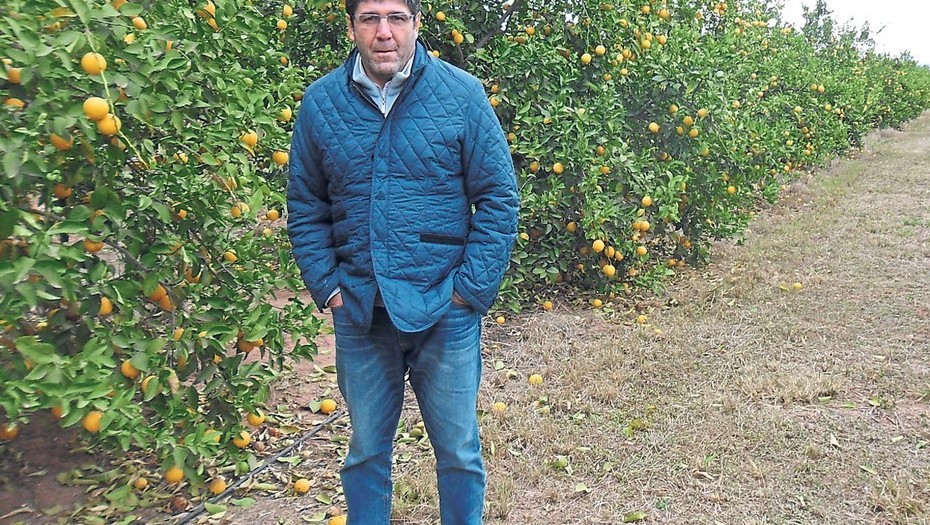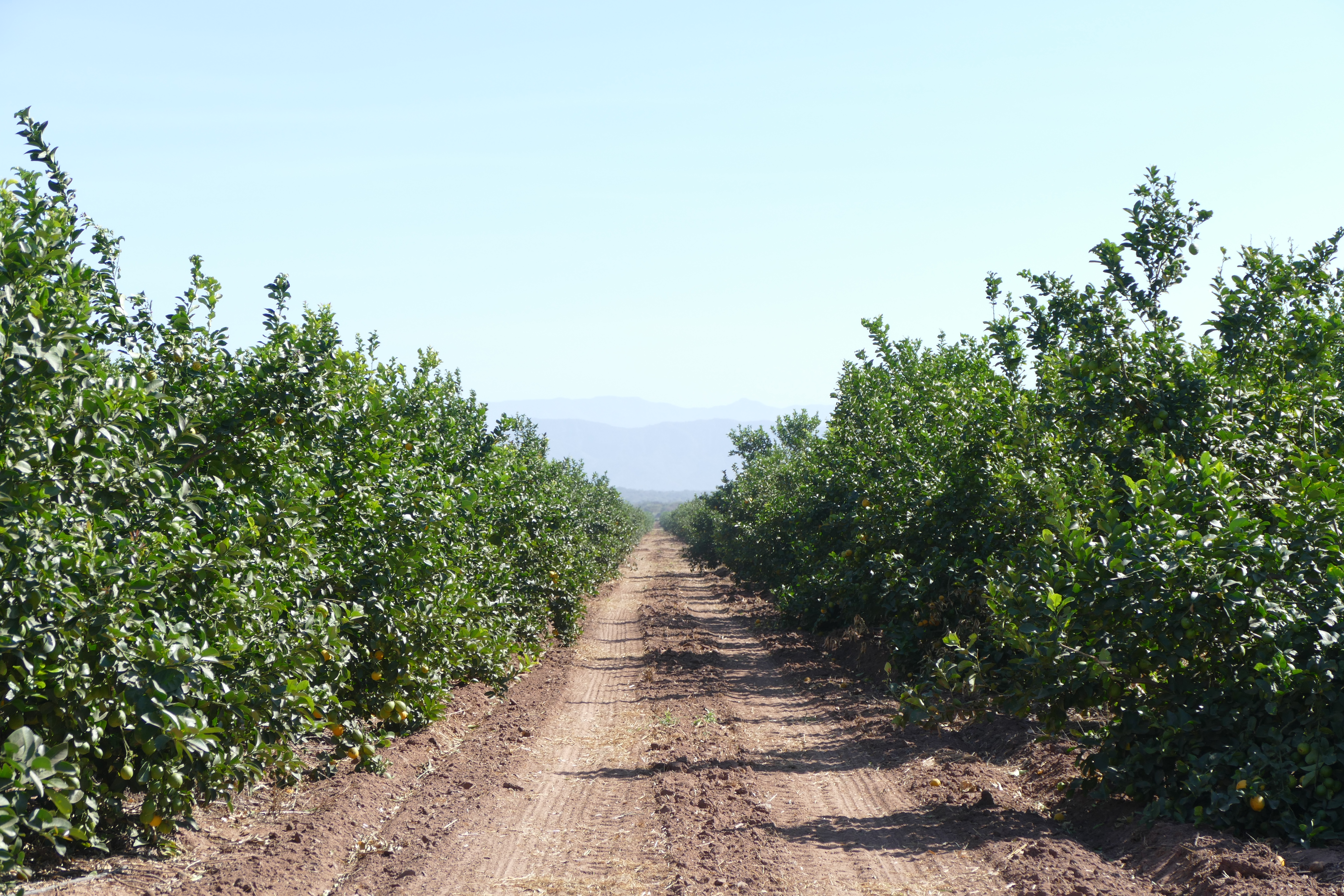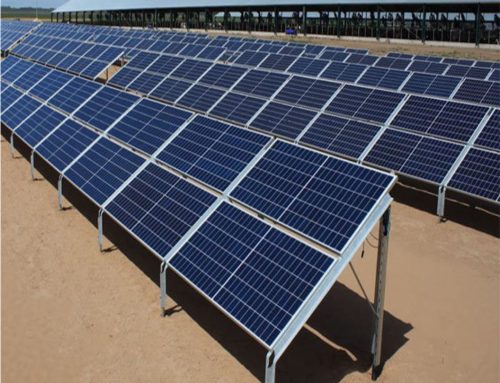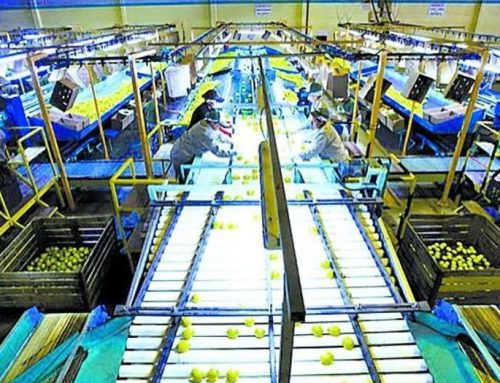CLARÍN RURAL, 16/07/2016
In Apolinario Saravia, 250 kilometers east of Salta capital, in the La Moraleja farm, the lemon production is world leader. A story to tell.

If the objective of many in agriculture is to achieve a vertical integration of production and add more and more value to the harvest, to be competitive and generate more and more jobs, the lemon production of tip, like the one that develops on the farm La Moraleja, in Salta, achieves this with great skill.
But, to begin with, some data of this sector. During 2015, the harvest of lemons in the country was more than one million tons, of which 25% is destined for fresh fruit (mostly for export) and the remaining 75% is processed in the industries.
According to the Argentine Federation of Citrus, the Argentine production is 15.42% of the world, but 37% of the industrial processing of the lemon that is made in the world takes place in Argentina. At that point, the Argentine north is strong, as companies in Tucumán, Jujuy and Salta. La Moraleja is one of the most important of them.
The discharge of the lemons and the first selection, at the beginning of a wide industrial process that is done in the department of Anta.
The company was founded 37 years ago in Apolinario Saravia, in the department of Anta, in the east of the province and has the peculiarity that it carries out integration from end to end.
They buy the seed from the experimental stations of INTA Famaillá and Yuto (although they are in the process of obtaining their own seeds) and then continue to industrialize the lemon in different ways.
On the farm, of more than 14,000 hectares, the lemon plantation occupies 3,500 hectares and produces a total of 135,000 tons. “We plan to add another 200 hectares per year for 5 years, until reaching about 5,000 hectares of this crop, which would allow us to obtain a production of 160,000 tons,” said Maximiliano Klix, president of the firm, Clarín Rural.
It was sometimes said that agriculture does not generate employment, but La Moraleja is the main employer in the Anta area. There work between 1,500 and 1,800 workers during the harvest season (March to August).
To get to that instance, the key to production is its high frequency localized irrigation system, which has the type of drop that goes where it has to go, by gravitational pressure, taking advantage of the slope of the ground.
Irrigation is a key topic. For that, they have two dams: one with a capacity of 8 million cubic liters and the other with 3 million cubic liters. “This is the heart of everything,” says Klix. From there they supply an aqueduct that has a distance of 65 kilometers, whose function is to leave the water at the head of each irrigation module.
These modules, of 100 hectares, are subdivided in turn into 4 parts of 25 hectares each, from which the water is delivered to each plant according to their needs.
With this irrigation system, they seek to have a sustainable production, since they do not use combustion engines that can be polluting.
Irrigation is essential, precisely, in this time, until the rains begin. “Here it rains an annual total of between 800 and 900 millimeters. The springs are dry in general. And we must pray that it will rain when summer is coming,” said the president of the firm.
Once harvested, the lemon is transported to the industrial plant that the firm has in the same farm, for processing. There they can process 1,000 tons per day and produce three products: lemon essential oil (used in the food industry), cloudy and clarified concentrated juice and dehydrated peel, which are used as a raw material for the production of pectin (a substance which in turn is used to gel foods).
On the farm they not only industrialize their own production, but also buy lemons from other producers, even from neighboring provinces such as Tucumán. In fact 80% of what they industrialize is their own production and the remaining 20% is from third parties.
Claudio Crivelli, in charge of the plant, says that one of the keys is to invest constantly. “In the inter harvest, we always make adjustments to improve efficiency and increase our production capacity,” he explained. 200 people work permanently at the factory he runs.
With such production, the treatment of effluents is a key issue. For this reason, they separate the solids from the liquids with the purpose that the liquids (after neutralizing the acidity) serve to be reused in the irrigation of the production of trees that the company has. The solids, on the other hand, are destined to feed the cattle with which the company also counts.
The production of La Moraleja is clearly focused on export: 85% of its turnover comes from business deals made with Russia, Spain, Holland and Italy. Commercially, one of its main advantages lies in the fact that the harvest begins months before its Tucumán competitors, as well as being out of season with respect to the northern hemisphere.
The amendment of the exchange rate helped them to recover international competitiveness. “But like any labor-intensive and export-focused industry, the internal costs rise. We understand that a point of equilibrium must still be found, “said Klix.
But, beyond the difficulties, the basis of competitiveness remains in innovation, efficiency and scale. Regarding that, in La Moraleja, they have a lot to tell. THE END
Roofed horticulture
In the La Moraleja farm, in Salta, horticultural production also has an important place. This activity occupies 40 hectares of crops under cover, of which 22.5 are tomatoes, 10 of melon and 7.5 of pepper. In total, they have 80 greenhouses of half a hectare each. In addition, they produce watermelon, but in the open.
Ramón Palma is in charge of horticulture, which is done in a greenhouse.
About 100 people work in these tasks, but in full harvest the figure grows to around 140. These products, unlike lemons (See The field is industry…), are mainly destined to the domestic market: they come with their own brand to the Central Market, in Buenos Aires. “The cost of freight is what complicates us the most”, says Ramón Palma, in charge of the horticultural production of La Moraleja.
Tomatoes, for example, are harvested in August, September and October and produce 100 tons per hectare.





Leave A Comment